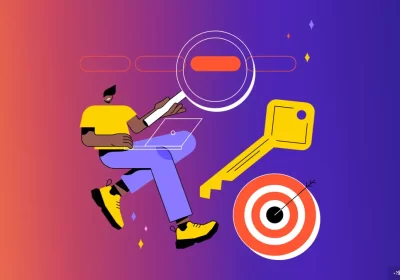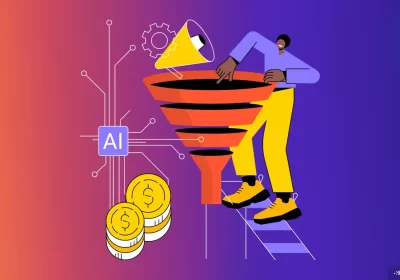You Had Me At Hello: Winning Customers’ Hearts and Minds

Making a great first impression is important. You may never get a second chance to make a great first impression. But, do you know when that first impression begins?
There is so much stuff out there and as human beings we simply don’t have the capacity to ingest, sort, or process every piece of new information presented to us. And besides, not all of it is of importance to us anyway.
To keep pace with the race to do better, be better, we have become selective in what we consciously acknowledge. For example, what we hear, see, smell, or feel. Most of us don’t notice the bird sounds whether we are indoors or outdoors, for example.
It’s Harder For Customers To Interpret Random Abstracted Information
While using bullet points is an ideal method of listing features, tips, or steps in a list, it’s simply not the way customers think. And while it may be tempting to communicate every element of your company’s proposition in a bulleted list, don’t do it.
Your message will have a better chance of being understood using a method that will resonate with how people think and feel versus trying to force them to interpret random bits of abstracted information.
This is the time to inject the magic of storytelling into your marketing. Storytelling allows you to connect your data in a way that people can assimilate, retain, and recall. Stories are told using various methods. Some marketers may use videos, others may tell their stories through advertising or product packaging, for example. The ultimate goal of the Marketer is to convey the message within the story to their audience.
However, people don’t always understand what you’ve said.
Consumers interpret marketing messages differently. When an urge/idea/message reaches a person’s brain it is interpreted based upon a multitude of factors that can include time, mood, demographic, and historical influences. You have worked hard on your message in hopes that it will be received favorably. Regardless whether you see the consumers’ interpretation as right or wrong; is irrelevant. The fact is that it is how it is.
This is why it’s important for marketing messages to be clear and simple — giving it a better chance of being understood and hopefully shared. Additionally, get to know your audience so you’ll know more about who you are telling your story to.
Quick To Judge
When consumers hear your message, they interpret it in their own way — not yours. Unlike being able to just press the undo button on your computer when you make a mistake or want to revert to the previous version of something, once a consumer has made a decision about your message, it’s very difficult to persuade them otherwise and you certainly can’t just undo what they heard or saw.
We are quick to judge—people, brands—and guard our decisions, often even in the midst of receiving information to the contrary.
Think about the last time a new person was hired for your department at work. After perhaps only a 10 minute conversation with that person you had formed a dislike towards them.
We are all sometimes quick to judge. In order to cope with the endless surge of influences, choices and messages we ingest an finite amount of information and make our decision. Someone’s appearance/behavior—the way they look, smell, dresses, or talks. The design of the website, the way the phone is answered, the packaging, the pricing. That quick decision may be right or it may be wrong. There may be ensuing, refutable data that challenges our initial judgment, but usually we disregard it. No one wants to hear they are wrong, right? Our minds are made up—don’t confuse us with the facts—we’re good now.
Within a short amount of time, the consumer has pieced together the components of the story and formed a decisive opinion. If the story is unclear or not consistent, then the consumer becomes confused and your story is ignored. Conversely, if the story is compelling, resonating with the consumer and reverberating their own aspirations, opinions, or goals, then the story is accepted.
The Illusory Customer First Impression
This brings us back to the title of this article. So, if our audiences are making quick judgments based upon their own decisive factors that we may or may not be able to control, the importance of winning their hearts and minds; making a great first impression is more critical that ever, right?
Well yes and no, because I’m not saying that first impressions aren’t important —they most certainly are. My position is that we don’t know when that first impression is formed in the consumer’s mind. This is because we don’t control the mixture of factors that influences the consumer to make their ultimate decision.
Usually, the first time a consumer interacts with your brand there’s no immediate connection or impression at all.
Most people don’t make a mental note of your signage, your pricing, your advertising, or the color of your blouse. At least not the first time they interact with you.
Let’s distinguish the difference between a prospective customer’s first contact with you and their first impression of you.
“First Contact” Is Seldom “First Impression”
This is why your story not only has to be something that your audience accepts, but it needs to be consistent across every customer contact point. We don’t know, nor can we control the factors that will be used to create the story that the customer will tell himself, which is why being authentic is important.
You may have an awesome logo, an extraordinary website, cool-looking staff getups and offer the most affordable prices in the city. But if your customers feel that your products are inferior and your customer service suck, then your story isn’t seen as being cogent.
When an organization or individual is perceived to be authentic and consistent regardless of the angle approached, the story being told is dubbed suitably consistent to support itself with the greatest number of audience members.
It’s not about breaking the bank redesigning your corporate identity, updating to advanced support desk software or putting an ostentatiously attractive video on your website. It’s about every point of contact between you and your audience before, during and after the transaction. This is how to win customers’ hearts and minds which ultimately translates to wallets, good feelings, and positive reviews.

Hazel Burgess
FOUNDER/SEO DIRECTOR
Hazel is the Founder & SEO Director at Envisager Studio, a premier website design agency specializing in WordPress website design, development and internet marketing. In her spare time, she writes about search engine optimization, website design, and internet marketing.


